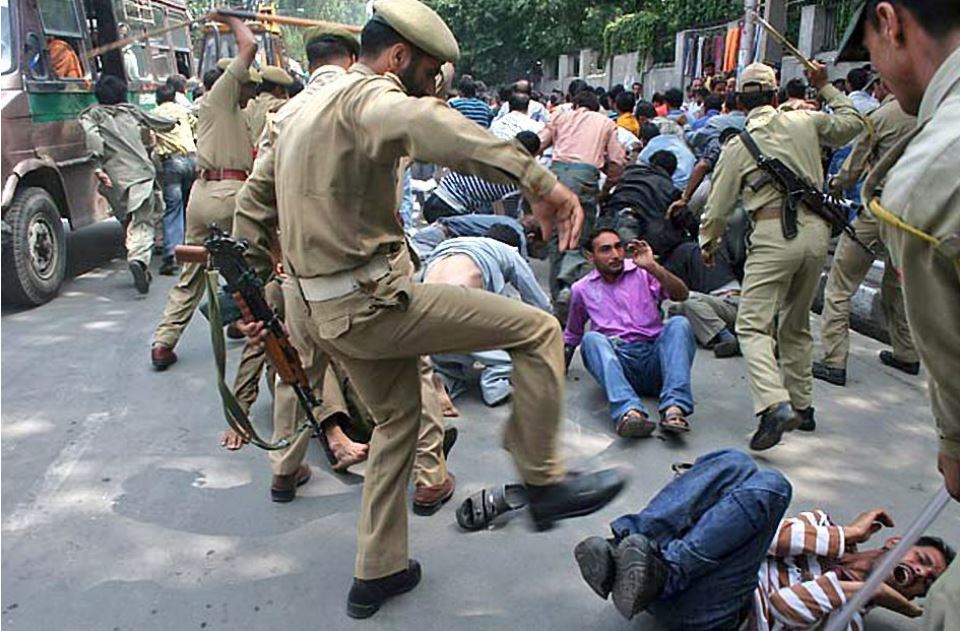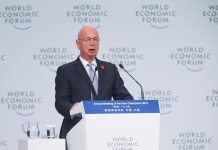The Kashmir conflict, referred to as a “territorial dispute,” has been central to tense relations in Asia for more than 70 years, particularly between the two nuclear powers of India and Pakistan.
A few days ago, Genocide Watch issued a Genocide Alert for India Administered Kashmir.

On August 5, the Indian President revoked the Special Autonomous Status of India Administered Jammu and Kashmir under Articles 370 and 35A of the Constitution of India. India has over 600,000 troops in Kashmir. Movement of people and freedom of the press are restricted. India has cut off internet communications.
At the time of Indian and Pakistani independence in 1947, Jammu and Kashmir was a princely state with a majority of Hindus in Jammu and a majority of Muslims in Kashmir. During Partition, its Hindu Maharaja chose to remain independent. When Pashtun militias invaded from Pakistan, the Maharaja acceded to the Union of India and India airlifted in troops.
Fighting between Pakistani militias and Indian troops ensued. India took a dispute with Pakistan to the UN Security Council, which passed Resolution 47 of 1948. It called for withdrawal of Pakistani fighters and reduction of Indian troops in Jammu and Kashmir. It also called for a plebiscite to determine Jammu and Kashmir’s future. The plebiscite has never been held. India and Pakistan both assert sovereignty over Kashmir. They divide the territory along the “line of control.” They have fought three wars since independence. Both nations have nuclear weapons.
In 1984, Kashmiri Muslim youth began demonstrations for Kashmiri indigenous self-determination that were crushed by Indian armed forces. Riots destroyed Hindu properties in 1986; armed Muslim insurgents targeted Hindus in 1989; and in 1990, over 100,000 Hindu pandits fled from Kashmir. Human Rights Watch reported that 50,000 people were killed in Kashmir from 1989 to 2006. The Kashmir State Human Rights Commission has evidence of 2,730 bodies buried in 40 mass graves. The Commission reported over 8000 disappearances. The Jammu and Kashmir Coalition of Civil Society said that by 2016, there were over 70,000 killings, most by Indian forces. Amnesty International reports that disappearances, torture and rape by Indian Army units against Kashmiri Muslims are common.
Applying Prof. Barbara Harff’s risk factors for genocide, the following are early warnings of massacres in Kashmir:
- Prior genocidal massacres and continuing impunity for such killings;
- Continued armed conflict between India and Pakistan over border areas in Kashmir;
- An exclusionary ideology of “Hindutva” – India as Hindu nation – by Modi’s ruling BJP;
- Authoritarian military rule without legal restraints imposed by civilian Indian officials;
- Rule by a minority military force (Hindus and Sikhs) over majority Muslim citizens;
- Cut-off of communications and outside access by internet, media, and trade;
- Widespread violations of basic human rights – torture, rape, 2-year detentions without charge, arbitrary arrests and deportations of Muslim political and human rights leaders.
Genocide Watch’s Ten Stages of the genocidal process are also far advanced:
- Classification: Hindu and Sikh Indian Army “us” vs. Kashmiri Muslim civilian “them;
- Symbolization: Muslims have Muslim names (on ID cards), Kashmiri language, dress, mosques;
- Discrimination: Hindu pandits were economically dominant until 1990; BJP reasserted Hindu power;
- Dehumanization: Muslims are called “terrorists”, “separatists,” “criminals,” “insurgents;”
- Organization: 600,000 heavily armed Indian Army troops and police dominate Kashmir;
- Polarization: Modi and the BJP incite anti-Muslim hatred; social media spread falsehoods;
- Preparation: The Indian Army occupies Kashmir; BJP leaders speak of the “Final Solution” for Kashmir;
- Persecution: Kashmiri Muslims are locked down, subject to arrest, torture, rape, and murder;
- Extermination: Genocidal massacres occurred during Partition; since 1990, there have been at least 25 massacres with death tolls over 25: 10 of Muslims by Indian troops; 15 of Hindus by Muslim militants;
- Denial: Modi and BJP say their goals are to “bring prosperity” and “end terrorism”; they deny any massacres. No Indian Army troops or police are ever tried for torture, rape or murder. Modi’s takeover is popular in India.
Genocide Watch calls upon the United Nations and its members to warn India not to commit genocide in Kashmir.
Here a few more information about what’s happening right now there in a great article by The Conversation:
On Aug. 4, India ordered all tourists and outside students to leave Kashmir effective immediately. They simultaneously implemented emergency measures to protect tourists and Indian Hindu yathris doing an annual Hindu pilgrimage. It also airlifted almost 10,000 more soldiers into Kashmir within a matter of two days.
Approximately 28,000 additional armed troops then invaded Kashmir Valley in trucks and tanks.
On Aug. 5, the Indian Home Minister Amit Shah told parliament that the president had signed a decree abolishing Section 35a and Article 370 of the Indian constitution.
The Indian government eliminated Kashmir’s special status in an effort to assimilate the Kashmiri people, extinguish their unique Indigenous title to land and claim their land as federal territory. This obliterated any last set of rights Kashmiris enjoyed as a semi-autonomous people in the Indian union of states.
Jammu and Kashmir State has been bifurcated into an Indian federal union territory.
These unilateral moves by the Indian state obliterate the rights Kashmiris had as citizens of India as well as their Indigenous rights. Under the United Nations Rights of Indigenous People (UNDRIP), India is obligated to ensure decisions pertaining to Kashmiri are made with them, using the principle of Free, Prior, Informed Consent (FPIC) that recognizes Kashmiris as a sovereign Indigenous people.
The UNDRIP was adopted and signed by India, China and Pakistan in 2007.
Millions under house arrest
Since Aug. 4, India has eliminated all access to and communication with Kashmir. The internet, mobile and landlines have been severed, and 14.7 million people have no access to essentials like food and medical support while Indian advances to take full control of their land using military power.
Aside from extremely rare media, Kashmiris have not been able to communicate with each other or with the outside world. The entire Jammu and Kashmir region is essentially imprisoned under house arrest.
Since 1949, Article 370 has granted the state of Jammu and Kashmir semi-autonomous constitutional status. Under its provisions, the region has its own legislative assembly, constitution, flag and independence in all matters except communications, foreign affairs and defence.
Revoking this status is the latest attempt to annihilate the Kashmiri people, extinguish their rights and eliminate their linguistic, social, cultural, economic and political existence as Indigenous people. The legality of dissolving the special status is being challenged by India’s legal and constitutional experts, and goes against the country’s Supreme Court rulings of recent years.
With these recent changes to Article 370 and Section 35a, India permits the permanent settlement of non-Kashmiris in Kashmiri land. Membership and settlement had previously been determined by the Kashmiri constitution. Non-Kashmiris are now allowed to purchase, acquire and permanently settle on land in Kashmir.
Under these changes, the Gujjar-Bakarwal people in Kashmir, for example, are immediately at greater risk. They migrate seasonally with animals on pastoral grounds, caring for both the animals and the land. India’s laws concerning land as individual property will not permit them to continue living on the land as they’ve historically done.
These changes will also result in a reconfiguration of the population in Kashmir. Kashmiris have long speculated that India intends to settle military and paramilitary families in Kashmir. As a Kashmiri, I have personally already seen semi-permanent military colonies in Kashmir.
Using an Indigenous framework
Indigenous peoples in Asia like the Kashmiri have long faced threats to their existence and their inherent rights, particularly “relational” land rights, as colonizing relations between Indigenous peoples and settler nations make land encroachment profitable and treat Indigenous lives as disposable.
Media, academics, legal and policy analysts barely touch on Indigenous rights, as outlined in the UNDRIP, when discussing Kashmir. But the Indigenous rights framework is necessary to accurately assess the distinct set of rights abuses Kashmiris face. India is in violation of multiple international human rights conventions and declarations it’s signed that apply to Kashmir.
Under UNDRIP, India is obligated to consult with Indigenous people rather than make decisions that impact them unilaterally, and to grant them the greatest possible opportunity for self-government and self-determination.
This right of Kashmiris to determine their future was also affirmed by a UN resolution on Kashmir in 1948. But this resolution limited self-determination to a decision on whether to accede to India or Pakistan.
There has been a reluctance to use the term genocide to describe the events that have unfolded in Kashmir over the decades.
But the legal definition of genocide fits. The Kashmiri people have been targeted for a demographic transformation on their territory by an outsider group by introducing mass permanent settlements of outsiders. The outsider group is the Hindu nationalist Indian state under the leadership of the Bharatiya Janata Party (BJP), and Prime Minister Narendra Modi.
Targeted for being Muslim
As a group, Kashmiris are additionally being targeted because they are predominantly Muslim as well as culturally and linguistically distinct. Muslims are treated as threats in India, including in Kashmir. They have been targeted for elimination in part through military force and economic oppression.
Kashmiri youth have been criminalized and put into state custody for “reform” programming for throwing stones to protest the injustices they face and the impunity of the Indian military. This treatment is a violation of the UN Convention on the Rights of a Child.
Refusal to call out genocide has happened before, in Nazi Germany, Rwanda and elsewhere. The United Nations Convention on Genocide states that it must never be permitted again. The convention also states that at-risk groups must be protected.
Instead, there has been an eerie silence from world leaders on naming the unfolding crime in Kashmir.
Kashmiris have been the guardians, gardeners and caretakers of Kashmiri land, water, each other and non-human life. Regardless of colonial borders, what is most fundamental is what Kashmiris, as a sovereign Indigenous people, want.
According to a popular Kashmiri protest chant that has reverberated through Kashmiri history:
“Jis Kashmir ko khoon se seencha! Woh Kashmir hamara hai!” “The Kashmir that has been drenched in our blood! It belongs to us, the Kashmiris!”
Read More:
- http://www.genocidewatch.com/copy-of-current-genocide-watch-aler
- https://theconversation.com/call-the-crime-in-kashmir-by-its-name-ongoing-genocide-120412












Silly they are fighting each other…. Put them both together and they could be very wealthy with lots of tourism and prospects…. Also they both almost look the same! It would almost be like Australia fighting England…. Idiots.
kashmir has always been INDIA not muslim. period
the goat fuckers can go back to the arabian desert!
India must take back pakistan and afghanistan. period